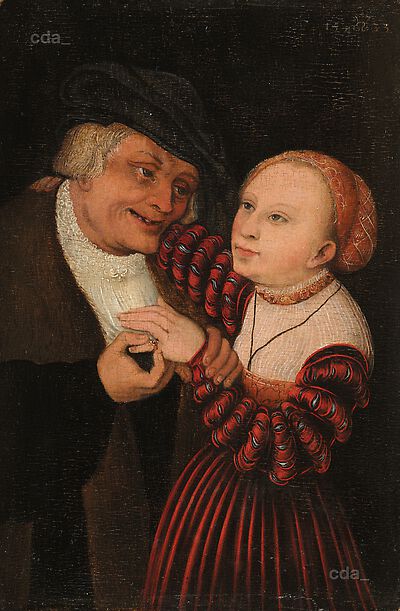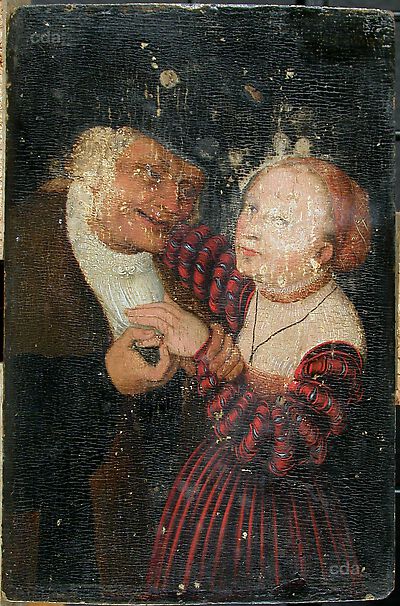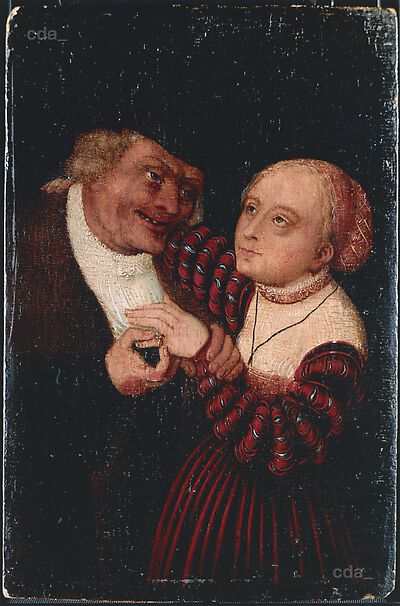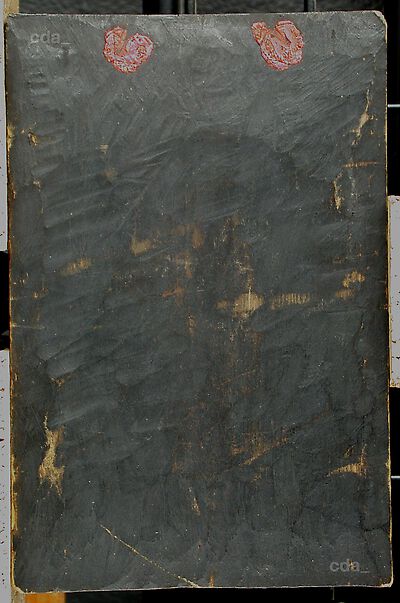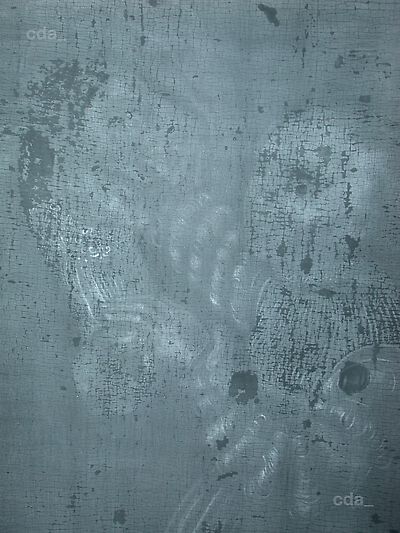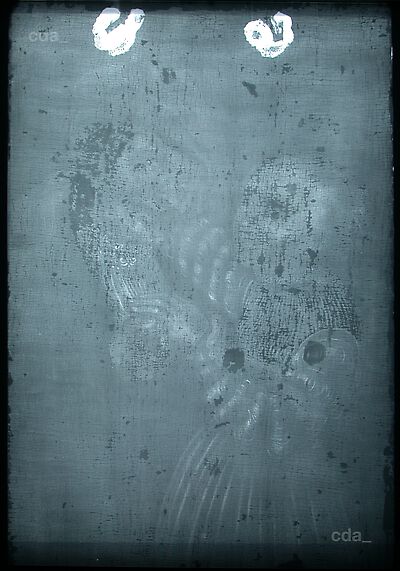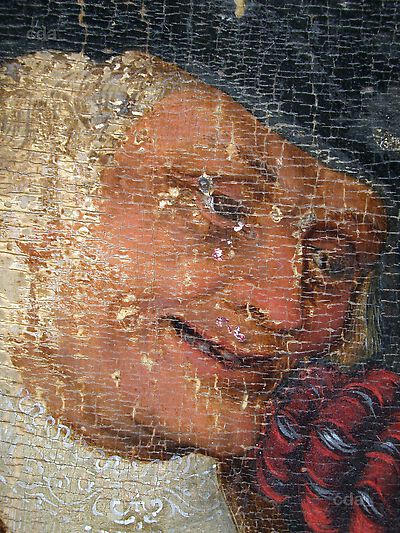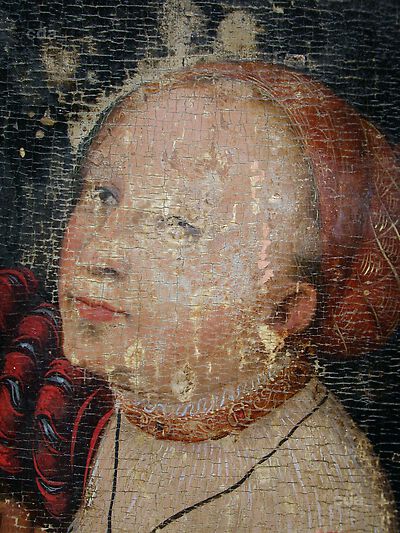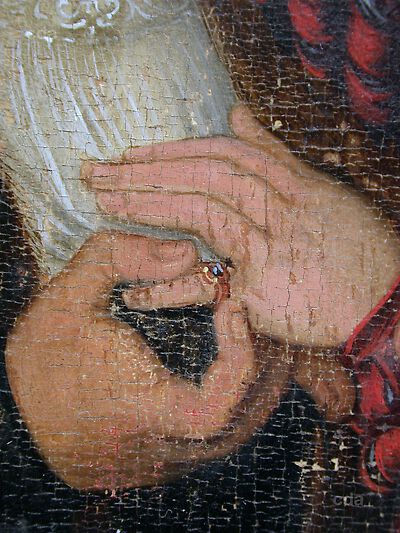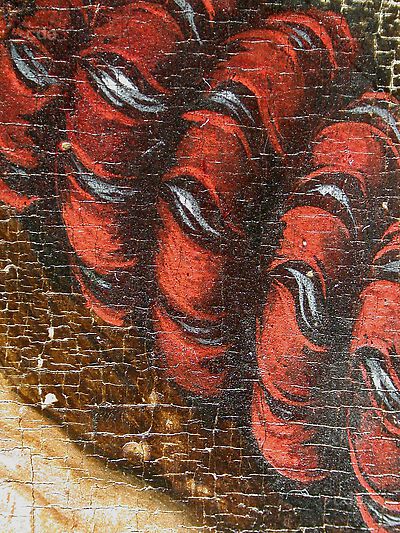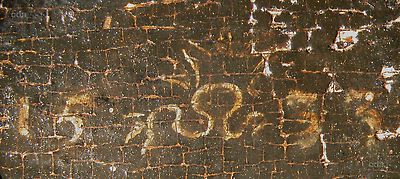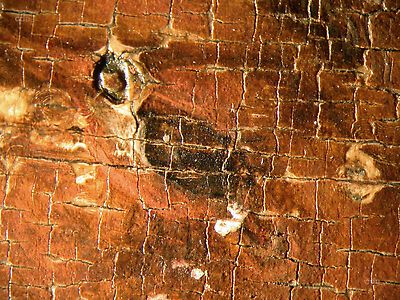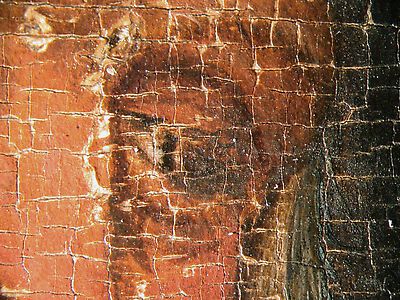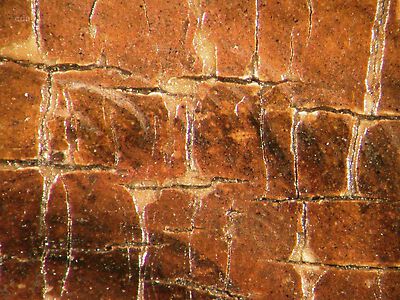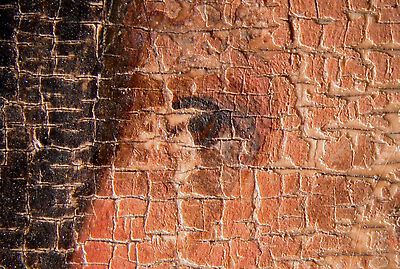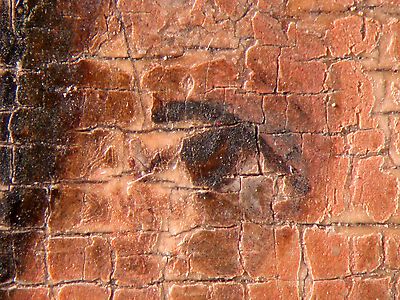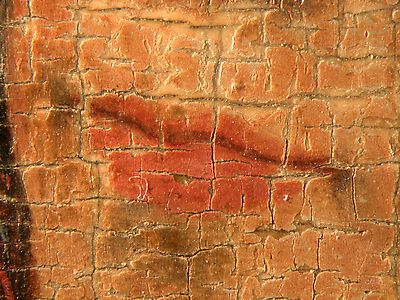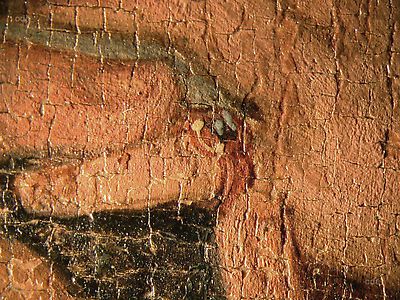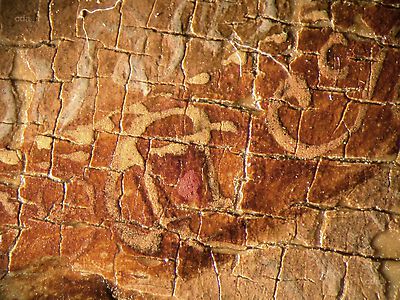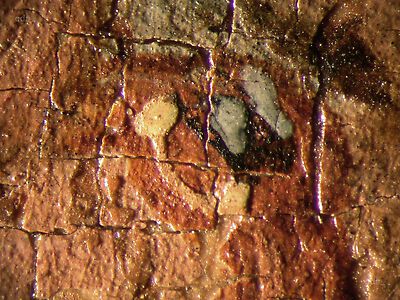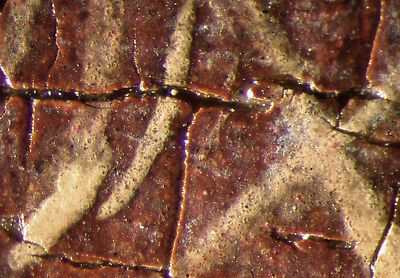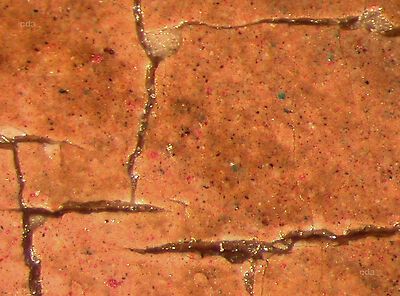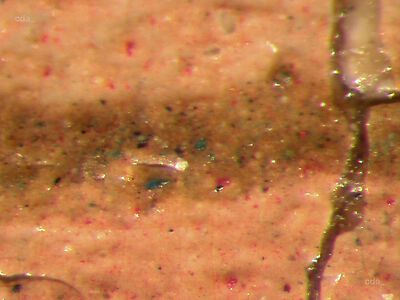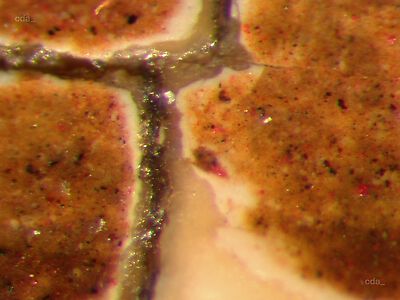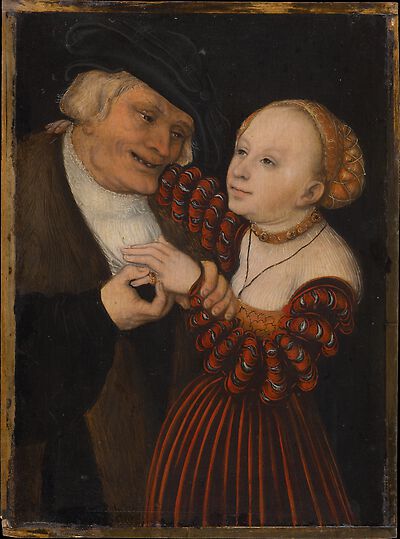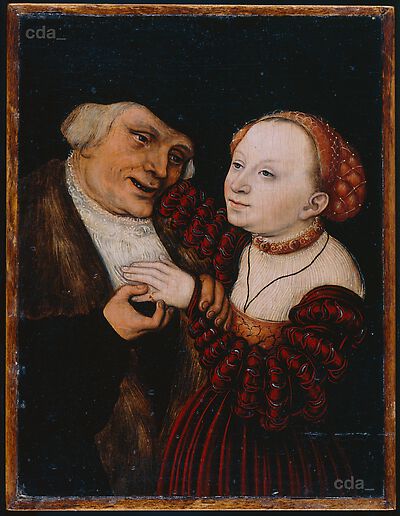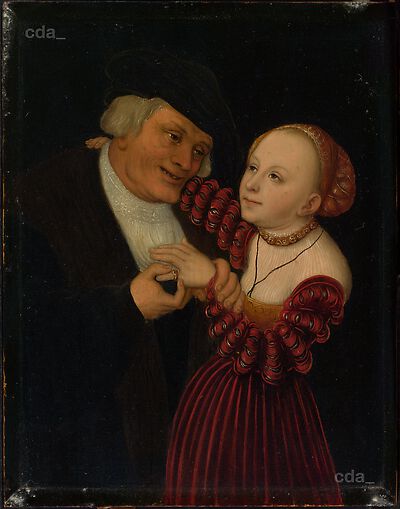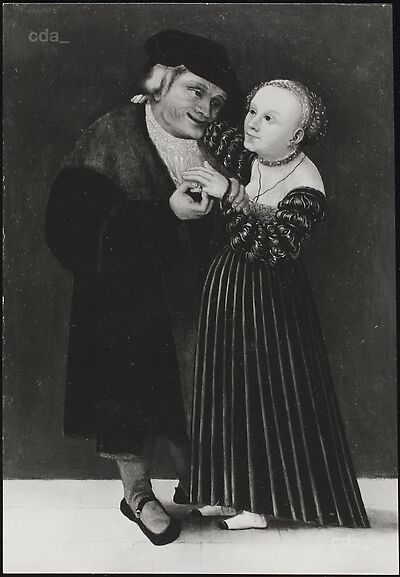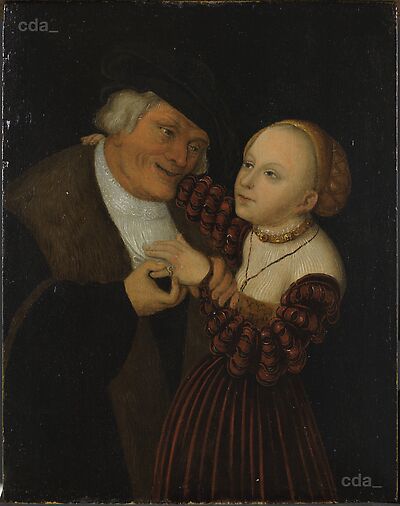Support
- the panel consists of a single plank, probably lime wood
- the direction of the grain suggests a tangential cut
- on the reverse the edges of the panel were broadly chamfered with a blockplane or a chisel; here the panel is c. 3mm thick
- the format was not altered
- black coating on the reverse
- the dimensions of the panel correspond with a standard format employed in the Cranach workshop ('A', H: c. 18.5-22.5 cm, W: c. 14-16 cm)
Ground and Imprimatura
- white ground, probably chalk
- the ground extends to the edge of the panel; numerous small format panels have survived from the Cranach workshop that were not fixed in a frame when the ground was applied
- white pigmented interlayer; it is probably an imprimatura extending over the entire surface between the ground and paint layers; white and pink toned imprimatura have been observed on numerous works by Lucas Cranach the Elder
Underdrawing
- no underdrawing was visible in the infrared reflectogram
Paint Layers and Gilding
Flesh paint
The modelling of the female face began with an opaque application of a pale admixture of lead white and fine pigment particles of vermillion. In this layer the shadows were defined with the addition of black (carbon black?) and brown pigments. Vermillion red pigment was employed to emphasize the red colouration in the cheeks. The x-radiography documents this rapid and assured modelling of the face in the initial layer and suggests that it is the work of an experienced artist. However, a stippled paint application characteristic of numerous paintings from the Wittenberg workshop at this time was not observed. The woman’s hands were were modeled and contoured with confidence. In addition to brown and black pigments the paint employed for the shadows and contours also contains a blue pigment, which is probably azurite. The use of azurite to achieve cooler half shadows has been observed on numerous paintings by Lucas Cranach and his workshop.
The darker flesh paint of the man contains a greater amount of red, brown and black pigments. The details in the eyes, including the eyelashes were executed with a few deft strokes. The eyebrows were indicated with brown paint and single hairs were then added in dark brown and light grey.
Robe and jewellery
The woman’s red robe was modulated with vermillion red paint and red lake glazes applied over an almost black underpaint. This layer structure – whereby a direct admixture of black and red is avoided – allows the representation of vibrant red velvet robes and corresponds with numerous surviving examples from the workshop of Cranach the Elder.
The head attire exhibits a red iron oxide underpainting and the decorative ornamentation was worked up with fine yellow lines. The transparent protrusions in the yellow paint are characteristic for lead-tin-yellow and have also been observed on numerous other works by Cranach.
The necklace and the ring were laid in with a reddish brown paint (iron oxide?) and then the abstract pattern and highlights were confidently applied, primarily with yellow paint (probably lead-tin-yellow) mixed with a red pigment (vermillion?). Red and now dark brown paints were used to represent the set stones in the neckband. It may be assumed that the stones, which now appear brown, were originally painted using green paint (copper green) that has discoloured over time.
The black background consists of a very finely ground black pigment. It is probably lamp black, which was frequently used in the Cranach workshop for black backgrounds. The addition of a small quantity of white to the black head attire of the man lifts it off the black background. The white shirt was painted with an admixture of lead white and carbon black. The fur trimming on the cloak was laid in with a brown underpaint and the single hairs were applied with dark brown paint using a pointed brush. It should be emphasized that the single hairs are not readily visible in normal light (due in part to the thin varnish application) and that the execution of single hairs on paintings from the Cranach workshop are considerably more rational and economical in execution.
[unpublished examination report, G. Heydenreich, 2005]
